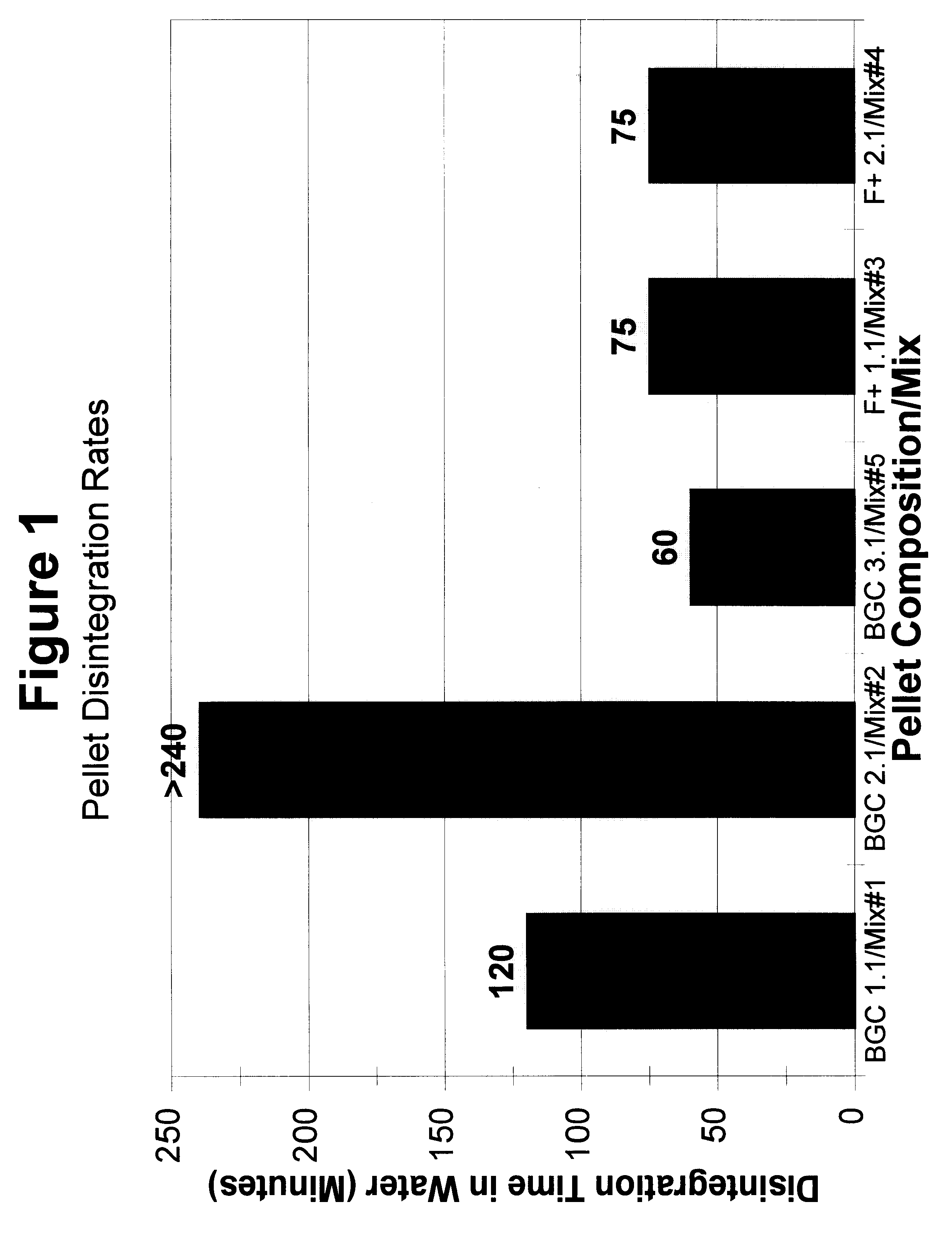Method for the enhanced anaerobic bioremediation of contaminants in aqueous sediments and other difficult environments
a bioremediation and anaerobic technology, applied in biological water/sewage treatment, water/sludge/sewage treatment, chemistry apparatus and processes, etc., can solve the problems of posing a potential long-term environmental risk, affecting the quality of water treatment, and requiring high-cost equipment, so as to reduce or eliminate, reduce the effect of waste and reducing the amount of was
- Summary
- Abstract
- Description
- Claims
- Application Information
AI Technical Summary
Benefits of technology
Problems solved by technology
Method used
Image
Examples
example 1
A set of water-column tests were conducted on Nov. 3, 1999 to evaluate the rates of disintegration and disaggregation of several pelletized chemical compositions prepared in accordance with both the present invention and those previously disclosed by Hince and Singer (Ser. No. 09 / 440,340, filed Nov. 15, 1999 and Ser. No. 09 / 441,484, filed Nov. 17, 1999). The disintegration tests involved the immersion of 2-to-3 pellets of each composition in approximately 6 ounces of water within glass vessels. The pellets used from each composition were relatively uniform, each being 1 / 4-inch in diameter and approximately 1.25 cm (0.6 inches) long.
FIG. 1 shows the effects of varying both the formulation and manufacturing criteria on the disintegration and disaggregation rates of the various pelletized compositions. As shown on FIG. 1, the time :required for the complete disintegration of the various pelletized compositions in water ranged from 60 minutes to more than 240 minutes. Based on the compa...
example 2
An initial set of settling-velocity tests were conducted in a water-column on Nov. 5, 1999 to evaluate the settling rates of the same pelletized chemical compositions described in EXAMPLE 1. The settling tests were conducted in a 3-in. diameter Lexan tube containing a 29 cm (11.4 in.) water column. Relatively uniform pellets were tested from each composition, with each pellet being 1 / 4-inch in diameter and 1.25 cm (0.6 in.) long. A minimum of five time trials were conducted for each composition. The settling velocity for each time trial was computed by dividing the height of the water column (29 cm; 11.4 in.) by the total time required for the pellet to reach the bottom of the column. Given that the water-column used was only 29 cm (11.4 in.) in thickness, the data likely reflect conservatively low estimates of the pellet settling velocities as it is unlikely that the pellets reached their terminal velocities in the water column.
FIG. 2 illustrates the data from the Nov. 5, 1999 sett...
example 3
An additional set of settling-velocity tests was conducted on Nov. 18, 1999 using the same experimental equipment and conditions as described in EXAMPLE 2 above. These tests evaluated the settling velocities of the same or similar pelletized compositions whereby pellets of uniform length (1.25 cm; 0.6 in.) and differing diameters were used-i.e., 1 / 4 inch, 3 / 16-in., and 5 / 32-in ., respectively. A minimum of ten time trials were conducted for pellets from each size class. The settling velocity for each time trial was computed by dividing the height of the water column (29 cm; 11.4 in.) by the total time required for the pellet to reach the bottom of the column. As noted above, the settling-velocity data are likely to underestimate the maximum potential velocities as it is unlikely that the pellets reached their terminal velocities within the 29-cm (11.4 in.) water column.
As shown on FIG. 4, the settling velocity of the pellets directly correlates with their size in accordance with Sto...
PUM
| Property | Measurement | Unit |
|---|---|---|
| weight | aaaaa | aaaaa |
| weight | aaaaa | aaaaa |
| specific gravity | aaaaa | aaaaa |
Abstract
Description
Claims
Application Information
 Login to View More
Login to View More - R&D
- Intellectual Property
- Life Sciences
- Materials
- Tech Scout
- Unparalleled Data Quality
- Higher Quality Content
- 60% Fewer Hallucinations
Browse by: Latest US Patents, China's latest patents, Technical Efficacy Thesaurus, Application Domain, Technology Topic, Popular Technical Reports.
© 2025 PatSnap. All rights reserved.Legal|Privacy policy|Modern Slavery Act Transparency Statement|Sitemap|About US| Contact US: help@patsnap.com



